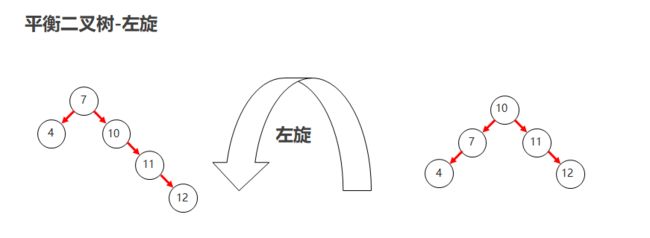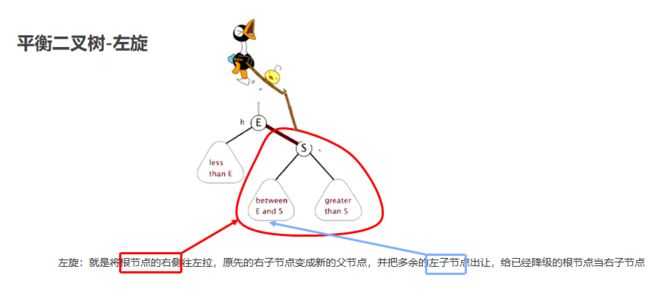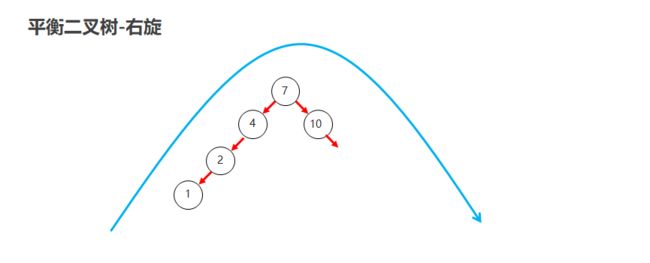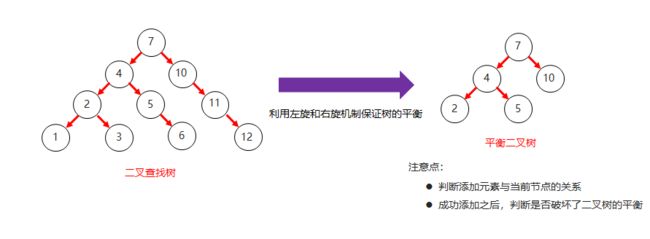day23集合02
1.泛型
1.1泛型概述
-
泛型的介绍
泛型是JDK5中引入的特性,它提供了编译时类型安全检测机制
-
泛型的好处
- 把运行时期的问题提前到了编译期间
- 避免了强制类型转换
-
泛型的定义格式
- <类型>: 指定一种类型的格式.尖括号里面可以任意书写,一般只写一个字母.例如:
- <类型1,类型2…>: 指定多种类型的格式,多种类型之间用逗号隔开.例如:
2.Set集合
2.1Set集合概述和特点【应用】
- 不可以存储重复元素
- 没有索引,不能使用普通for循环遍历
2.2Set集合的使用【应用】
存储字符串并遍历
public class MySet1 {
public static void main(String[] args) {
//创建集合对象
Set<String> set = new TreeSet<>();
//添加元素
set.add("ccc");
set.add("aaa");
set.add("aaa");
set.add("bbb");
// for (int i = 0; i < set.size(); i++) {
// //Set集合是没有索引的,所以不能使用通过索引获取元素的方法
// }
//遍历集合
Iterator<String> it = set.iterator();
while (it.hasNext()){
String s = it.next();
System.out.println(s);
}
System.out.println("-----------------------------------");
for (String s : set) {
System.out.println(s);
}
}
}
3.TreeSet集合
3.1TreeSet集合概述和特点【应用】
- 不可以存储重复元素
- 没有索引
- 可以将元素按照规则进行排序
- TreeSet():根据其元素的自然排序进行排序
- TreeSet(Comparator comparator) :根据指定的比较器进行排序
3.2TreeSet集合基本使用【应用】
存储Integer类型的整数并遍历
public class TreeSetDemo01 {
public static void main(String[] args) {
//创建集合对象
TreeSet<Integer> ts = new TreeSet<Integer>();
//添加元素
ts.add(10);
ts.add(40);
ts.add(30);
ts.add(50);
ts.add(20);
ts.add(30);
//遍历集合
for(Integer i : ts) {
System.out.println(i);
}
}
}
3.3自然排序Comparable的使用【应用】
-
案例需求
- 存储学生对象并遍历,创建TreeSet集合使用无参构造方法
- 要求:按照年龄从小到大排序,年龄相同时,按照姓名的字母顺序排序
-
实现步骤
- 使用空参构造创建TreeSet集合
- 用TreeSet集合存储自定义对象,无参构造方法使用的是自然排序对元素进行排序的
- 自定义的Student类实现Comparable接口
- 自然排序,就是让元素所属的类实现Comparable接口,重写compareTo(T o)方法
- 重写接口中的compareTo方法
- 重写方法时,一定要注意排序规则必须按照要求的主要条件和次要条件来写
- 使用空参构造创建TreeSet集合
-
代码实现
学生类
public class Student implements Comparable<Student>{ private String name; private int age; public Student() { } public Student(String name, int age) { this.name = name; this.age = age; } public String getName() { return name; } public void setName(String name) { this.name = name; } public int getAge() { return age; } public void setAge(int age) { this.age = age; } @Override public String toString() { return "Student{" + "name='" + name + '\'' + ", age=" + age + '}'; } @Override public int compareTo(Student o) { //按照对象的年龄进行排序 //主要判断条件: 按照年龄从小到大排序 int result = this.age - o.age; //次要判断条件: 年龄相同时,按照姓名的字母顺序排序 result = result == 0 ? this.name.compareTo(o.getName()) : result; return result; } }测试类
public class MyTreeSet2 { public static void main(String[] args) { //创建集合对象 TreeSet<Student> ts = new TreeSet<>(); //创建学生对象 Student s1 = new Student("zhangsan",28); Student s2 = new Student("lisi",27); Student s3 = new Student("wangwu",29); Student s4 = new Student("zhaoliu",28); Student s5 = new Student("qianqi",30); //把学生添加到集合 ts.add(s1); ts.add(s2); ts.add(s3); ts.add(s4); ts.add(s5); //遍历集合 for (Student student : ts) { System.out.println(student); } } }
3.4比较器排序Comparator的使用【应用】
-
案例需求
- 存储老师对象并遍历,创建TreeSet集合使用带参构造方法
- 要求:按照年龄从小到大排序,年龄相同时,按照姓名的字母顺序排序
-
实现步骤
- 用TreeSet集合存储自定义对象,带参构造方法使用的是比较器排序对元素进行排序的
- 比较器排序,就是让集合构造方法接收Comparator的实现类对象,重写compare(T o1,T o2)方法
- 重写方法时,一定要注意排序规则必须按照要求的主要条件和次要条件来写
-
代码实现
老师类
public class Teacher { private String name; private int age; public Teacher() { } public Teacher(String name, int age) { this.name = name; this.age = age; } public String getName() { return name; } public void setName(String name) { this.name = name; } public int getAge() { return age; } public void setAge(int age) { this.age = age; } @Override public String toString() { return "Teacher{" + "name='" + name + '\'' + ", age=" + age + '}'; } }测试类
public class MyTreeSet4 { public static void main(String[] args) { //创建集合对象 TreeSet<Teacher> ts = new TreeSet<>(new Comparator<Teacher>() { @Override public int compare(Teacher o1, Teacher o2) { //o1表示现在要存入的那个元素 //o2表示已经存入到集合中的元素 //主要条件 int result = o1.getAge() - o2.getAge(); //次要条件 result = result == 0 ? o1.getName().compareTo(o2.getName()) : result; return result; } }); //创建老师对象 Teacher t1 = new Teacher("zhangsan",23); Teacher t2 = new Teacher("lisi",22); Teacher t3 = new Teacher("wangwu",24); Teacher t4 = new Teacher("zhaoliu",24); //把老师添加到集合 ts.add(t1); ts.add(t2); ts.add(t3); ts.add(t4); //遍历集合 for (Teacher teacher : ts) { System.out.println(teacher); } } }
3.5两种比较方式总结【理解】
- 两种比较方式小结
- 自然排序: 自定义类实现Comparable接口,重写compareTo方法,根据返回值进行排序
- 比较器排序: 创建TreeSet对象的时候传递Comparator的实现类对象,重写compare方法,根据返回值进行排序
- 在使用的时候,默认使用自然排序,当自然排序不满足现在的需求时,必须使用比较器排序
- 两种方式中关于返回值的规则
- 如果返回值为负数,表示当前存入的元素是较小值,存左边
- 如果返回值为0,表示当前存入的元素跟集合中元素重复了,不存
- 如果返回值为正数,表示当前存入的元素是较大值,存右边
4.数据结构
4.1二叉树【理解】
4.2二叉查找树【理解】
-
二叉查找树的特点
- 二叉查找树,又称二叉排序树或者二叉搜索树
- 每一个节点上最多有两个子节点
- 左子树上所有节点的值都小于根节点的值
- 右子树上所有节点的值都大于根节点的值
-
二叉查找树结构图
-
二叉查找树和二叉树对比结构图
-
二叉查找树添加节点规则
- 小的存左边
- 大的存右边
- 一样的不存
4.3平衡二叉树【理解】
-
平衡二叉树的特点
- 二叉树左右两个子树的高度差不超过1
- 任意节点的左右两个子树都是一颗平衡二叉树
-
平衡二叉树旋转
-
平衡二叉树和二叉查找树对比结构图
-
平衡二叉树旋转的四种情况
4.3红黑树【理解】
-
红黑树的特点
- 平衡二叉B树
- 每一个节点可以是红或者黑
- 红黑树不是高度平衡的,它的平衡是通过"自己的红黑规则"进行实现的
-
红黑树的红黑规则有哪些
-
红黑树添加节点的默认颜色
-
红黑树添加节点后如何保持红黑规则
- 根节点位置
- 直接变为黑色
- 非根节点位置
- 父节点为黑色
- 不需要任何操作,默认红色即可
- 父节点为红色
- 叔叔节点为红色
- 将"父节点"设为黑色,将"叔叔节点"设为黑色
- 将"祖父节点"设为红色
- 如果"祖父节点"为根节点,则将根节点再次变成黑色
- 叔叔节点为黑色
- 将"父节点"设为黑色
- 将"祖父节点"设为红色
- 以"祖父节点"为支点进行旋转
- 叔叔节点为红色
- 父节点为黑色
- 根节点位置
##5.HashSet集合
5.1HashSet集合概述和特点【应用】
- 底层数据结构是哈希表
- 存取无序
- 不可以存储重复元素
- 没有索引,不能使用普通for循环遍历
5.2HashSet集合的基本应用【应用】
存储字符串并遍历
public class HashSetDemo {
public static void main(String[] args) {
//创建集合对象
HashSet<String> set = new HashSet<String>();
//添加元素
set.add("hello");
set.add("world");
set.add("java");
//不包含重复元素的集合
set.add("world");
//遍历
for(String s : set) {
System.out.println(s);
}
}
}
5.3哈希值【理解】
-
哈希值简介
是JDK根据对象的地址或者字符串或者数字算出来的int类型的数值
-
如何获取哈希值
Object类中的public int hashCode():返回对象的哈希码值
-
哈希值的特点
- 同一个对象多次调用hashCode()方法返回的哈希值是相同的
- 默认情况下,不同对象的哈希值是不同的。而重写hashCode()方法,可以实现让不同对象的哈希值相同
5.4哈希表结构【理解】
5.5HashSet集合存储学生对象并遍历【应用】
-
案例需求
- 创建一个存储学生对象的集合,存储多个学生对象,使用程序实现在控制台遍历该集合
- 要求:学生对象的成员变量值相同,我们就认为是同一个对象
-
代码实现
学生类
public class Student { private String name; private int age; public Student() { } public Student(String name, int age) { this.name = name; this.age = age; } public String getName() { return name; } public void setName(String name) { this.name = name; } public int getAge() { return age; } public void setAge(int age) { this.age = age; } @Override public boolean equals(Object o) { if (this == o) return true; if (o == null || getClass() != o.getClass()) return false; Student student = (Student) o; if (age != student.age) return false; return name != null ? name.equals(student.name) : student.name == null; } @Override public int hashCode() { int result = name != null ? name.hashCode() : 0; result = 31 * result + age; return result; } }测试类
public class HashSetDemo02 { public static void main(String[] args) { //创建HashSet集合对象 HashSet<Student> hs = new HashSet<Student>(); //创建学生对象 Student s1 = new Student("林青霞", 30); Student s2 = new Student("张曼玉", 35); Student s3 = new Student("王祖贤", 33); Student s4 = new Student("王祖贤", 33); //把学生添加到集合 hs.add(s1); hs.add(s2); hs.add(s3); hs.add(s4); //遍历集合(增强for) for (Student s : hs) { System.out.println(s.getName() + "," + s.getAge()); } } } -
总结
HashSet集合存储自定义类型元素,要想实现元素的唯一,要求必须重写hashCode方法和equals方法
















